Art in lockdown: Making anthotype plant prints
- Published
To help maintain his wellbeing during the coronavirus lockdown, photographer Tim Boddy turned to a natural process to create beautiful prints of flowers and leaves, known as anthotypes.
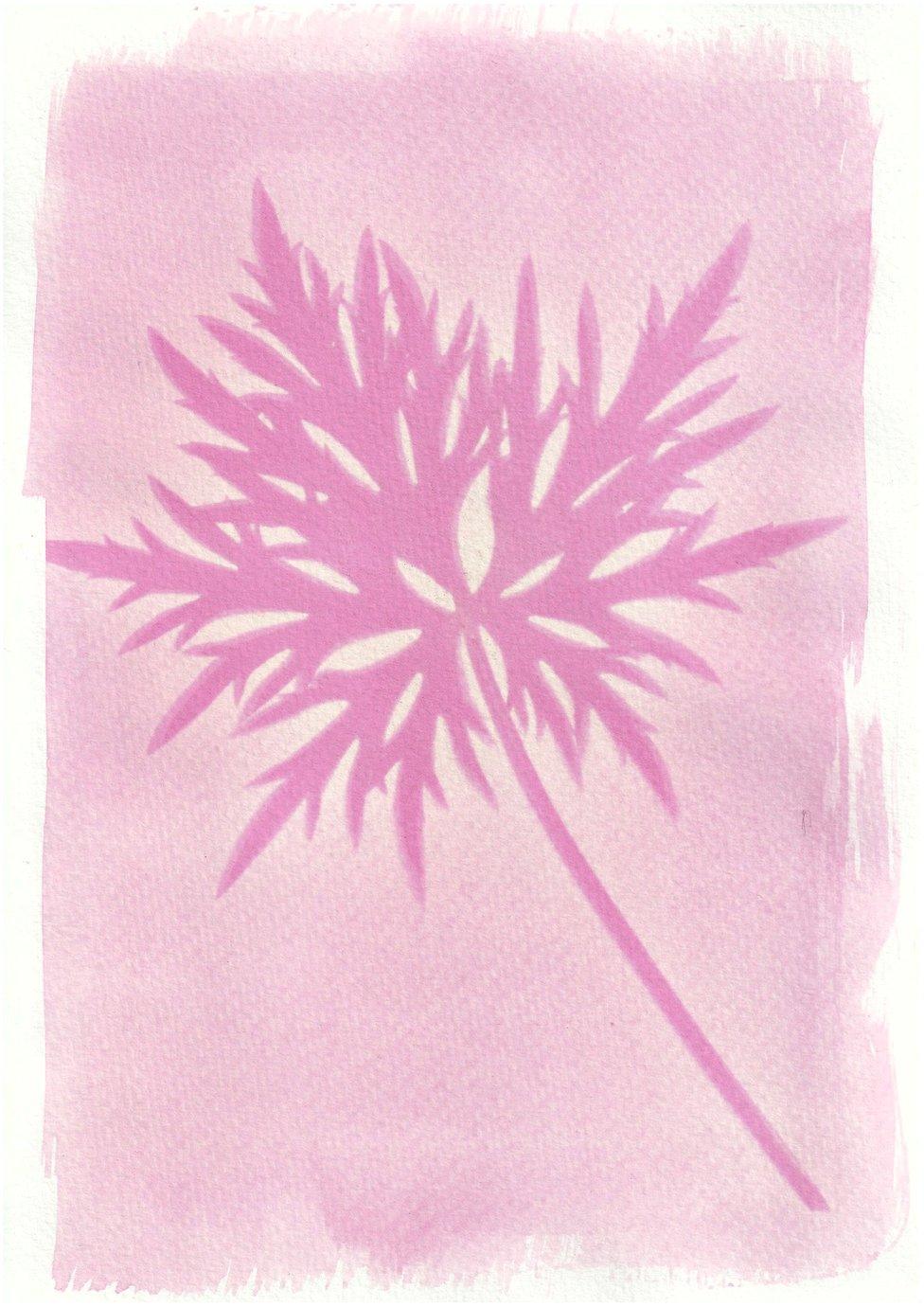
Meadow Buttercup leaf (ranunculus acris) found at Tower Hamlets Cemetery, created using a beetroot stem emulsion
When Tim Boddy couldn't leave his home more than once a day for exercise, because of lockdown restrictions, he used the time to gather local flowers and leaves in and around Bow in East London.
He then used a photographic technique that dates back to the mid-1800s to create colourful silhouettes of plant material, using natural chemicals from the plants and the power of the sun.
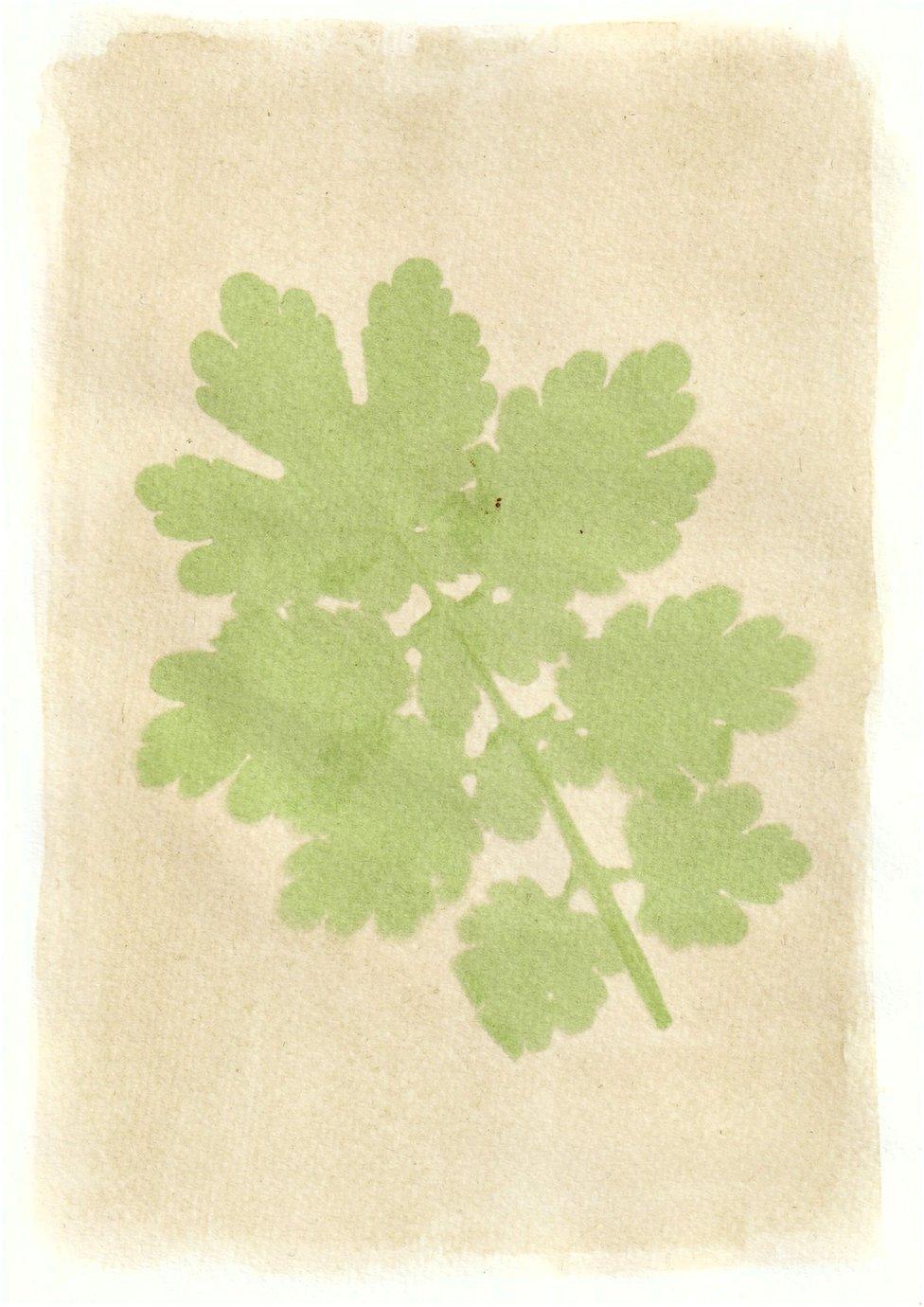
Greater Celandine (Chelidonium Majus) found at Olympic Park, created using spinach emulsion
Boddy created 147 anthotype plant prints during lockdown.
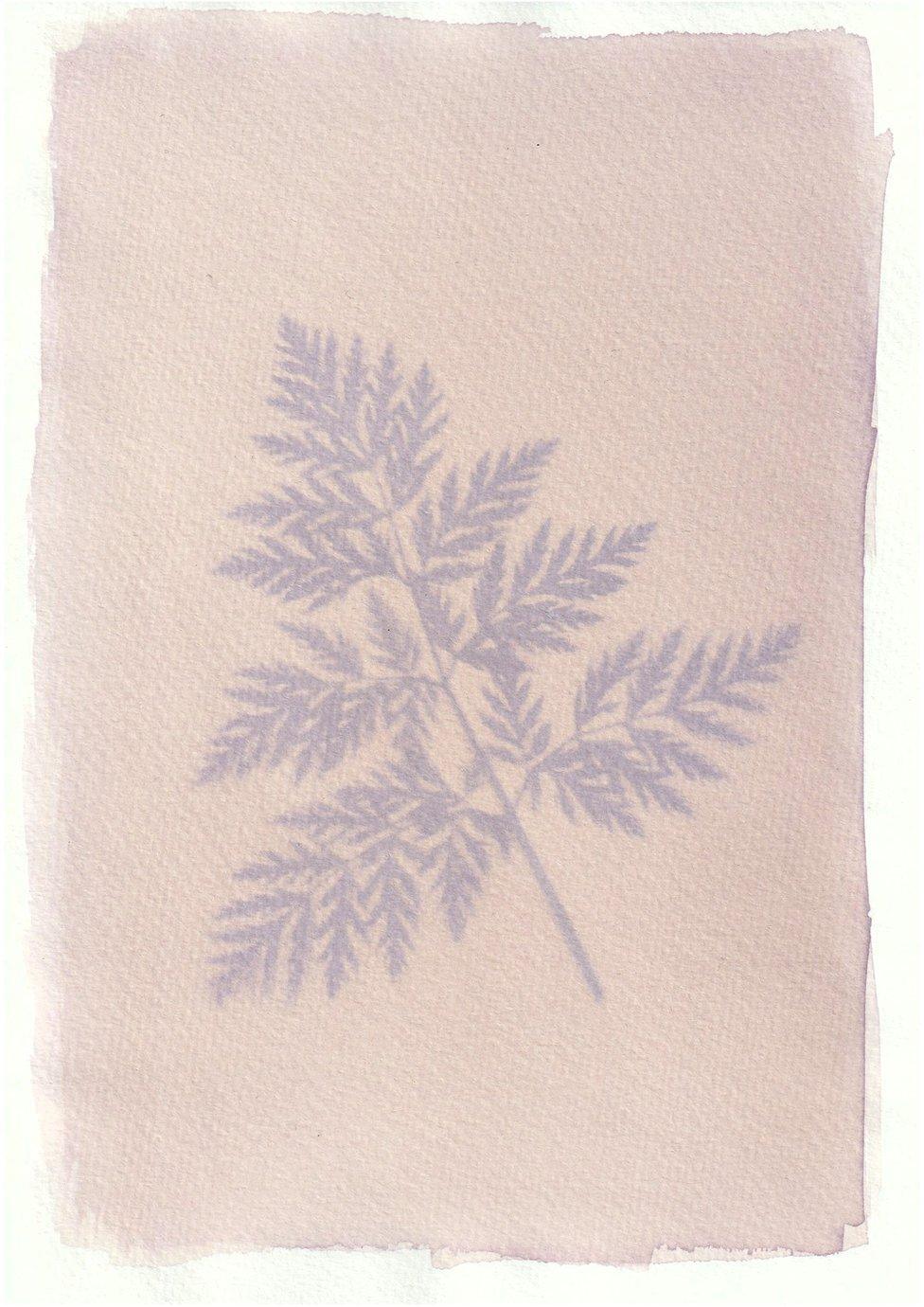
Cow Parsley (Anthriscus sylvestris) found at Greenway by Stratford, created using a red wine emulsion
It was when he was studying for an MA in Photojournalism and Documentary Photography at London College of Communication, that his interest in anthotypes began.
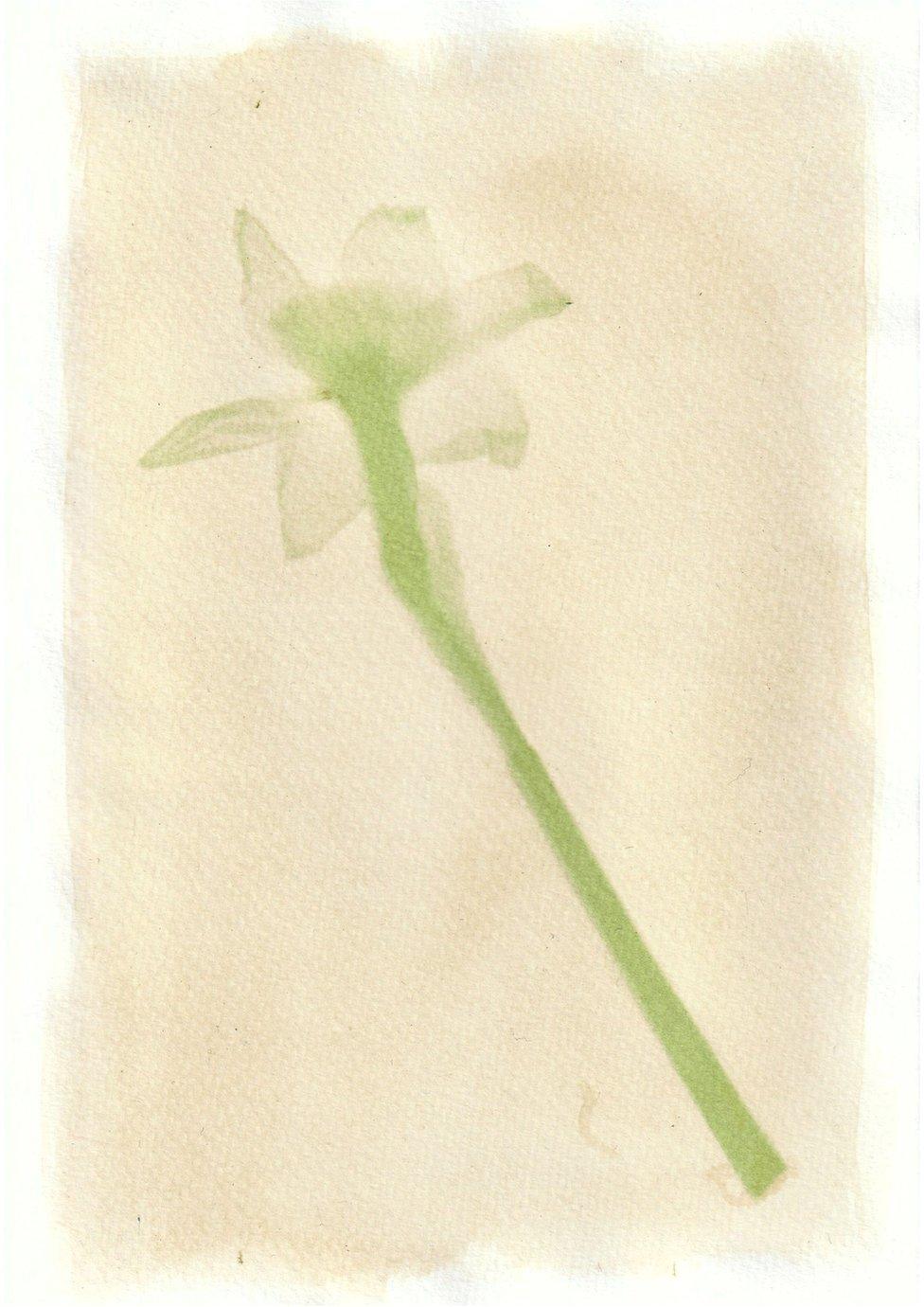
Daffodil (narcissus) found at Tower Hamlets Cemetery, created using a baby spinach emulsion
"I was keen to document a gardening group, called Rainbow Grow, [that] I volunteer with," says Boddy.
"I volunteer there partly as a means to manage my own mental health.
"The anthoype process allowed me to collaborate with the land and plants at Rainbow Grow's space in a literal way... I used vegetables grown in their garden, such as rainbow chard, to create prints."
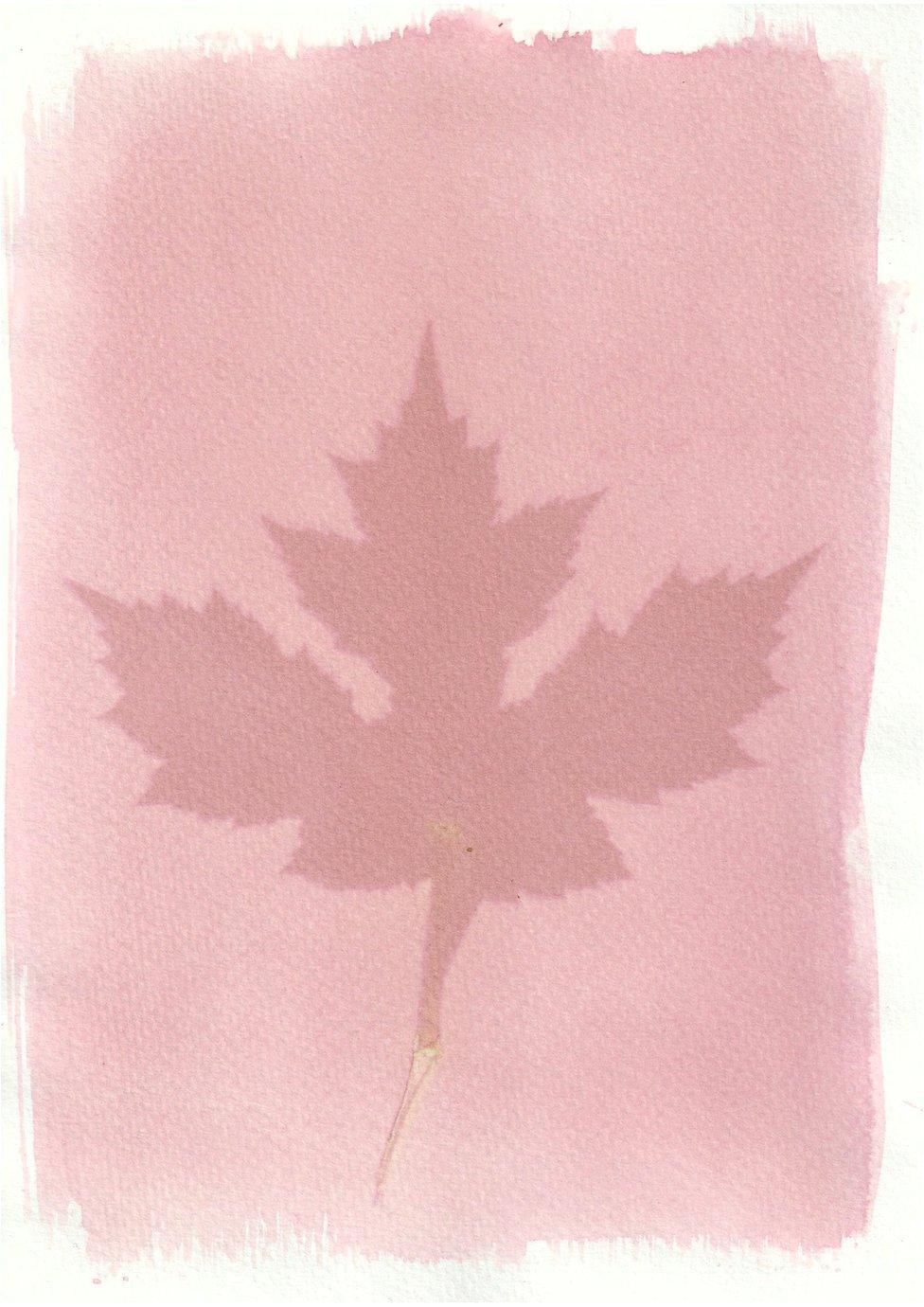
Cow Parsnip (Heracleum maximum) found at Mile End Park, created using a beetroot leaves emulsion
Boddy explains the natural process in creating his anthotypes: "I start by sourcing plant-based materials, which I split into two categories: the emulsion and the outline.
"The emulsion is the chemical that reacts to sunlight, and the outline is the plant material that creates a silhouette on the paper.
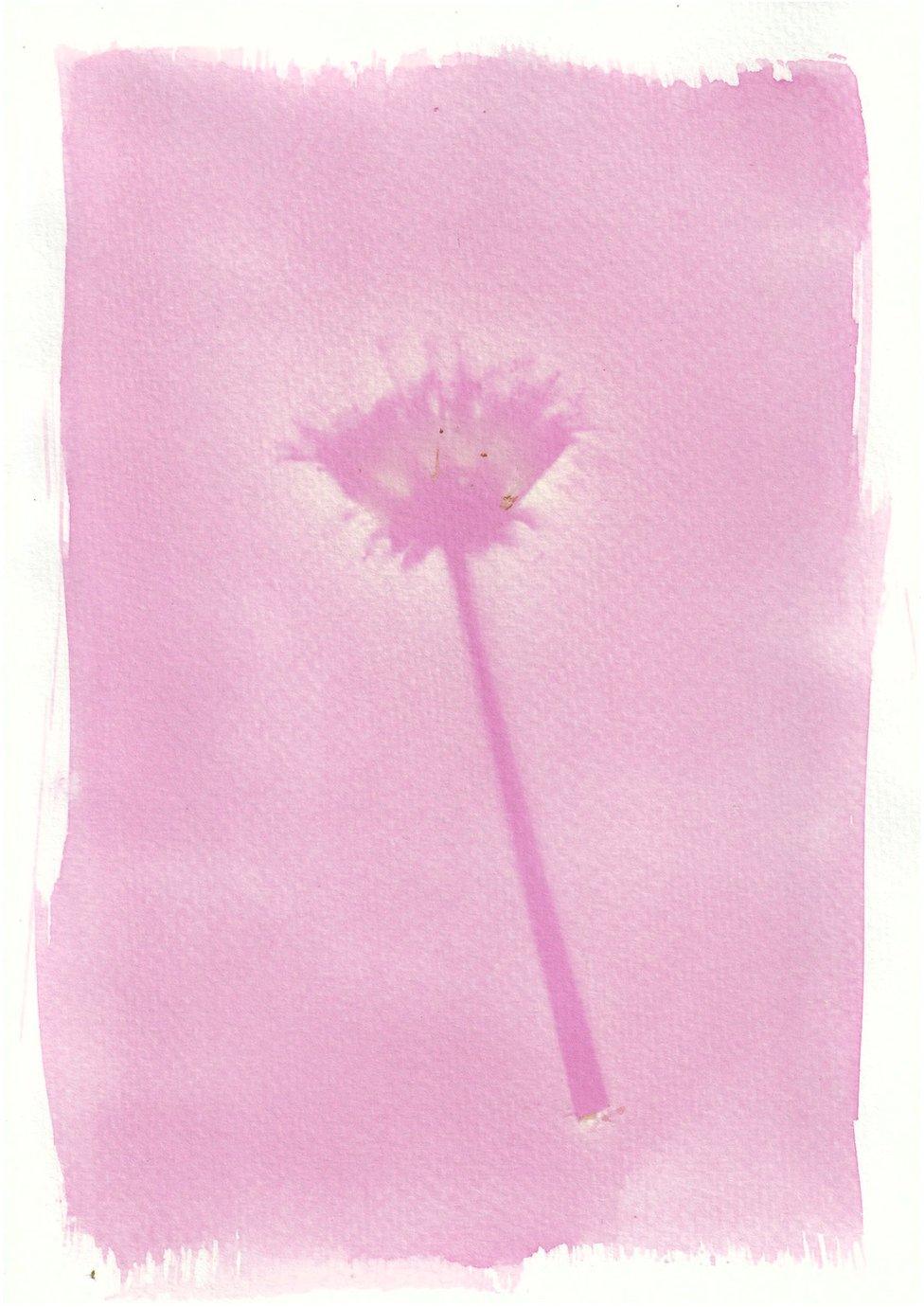
Dandelion (taraxacum) found at Tower Hamlets Cemetery, created using a beetroot stem emulsion
"I extract the emulsion from various vegetables - beetroot leaves and spinach are especially reliable and an excellent entry point.
"I use a mortar and pestle to crush the vegetables until they form a pulp.
"This pulp needs to be filtered and squeezed through a coffee filter (organic muslin cloth can also be used) into a bowl.
"I normally add a few drops of pure alcohol at this point; this helps speed up the anthotype process.
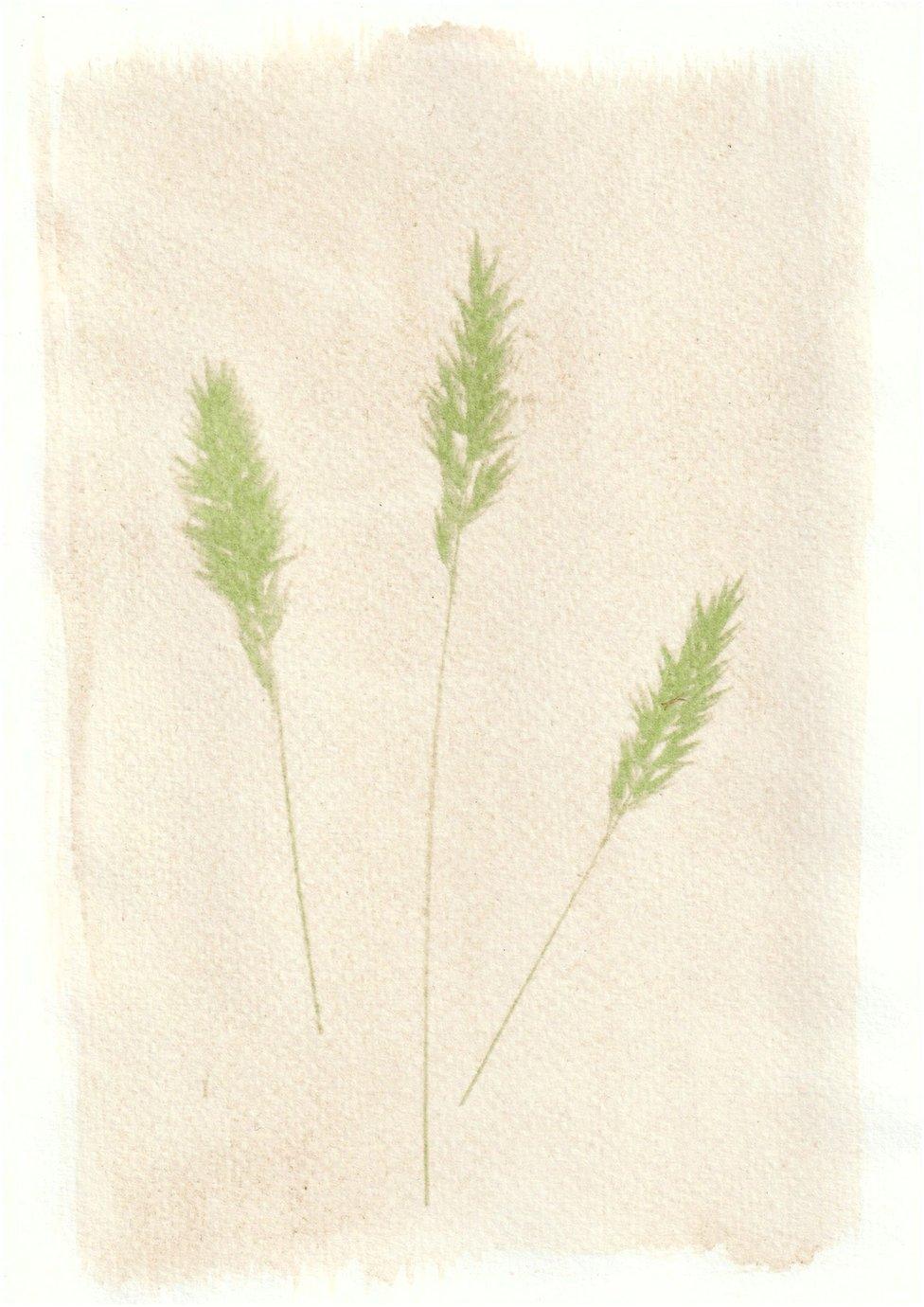
Wall Barley (Hordeum murinum) found at The Waterglades, Olympic Park, created using a Cavolo Nero emulsion
"[Then] this is perhaps the most fun phase, where I feel like a cross between a mad scientist and the world's worst chef - I add in items like powdered turmeric which can create a wonderful rose-gold colour when used with beetroot juice, for example.
"Using a soft foam brush, the juice is painted onto thick art paper, and left to dry in the dark.
"I take my plant cutting, [which I] set aside for the outline, and carefully place it onto the painted paper. Leaves are particularly good for this - especially those with a distinctive shape.
"I insert the painted paper into a frameless picture frame - so the leaf remains tight against the glass and thus doesn't move during the exposing phase.

Bracken (pteridium aquilinum) found at Tower Hamlets Cemetery, created using a beetroot stem emulsion with port
"The print needs to react with ultraviolet rays; obviously the sunnier it is, and the closer to summer you are, the quicker your print will develop.
"This can take between two hours and four weeks, or more.
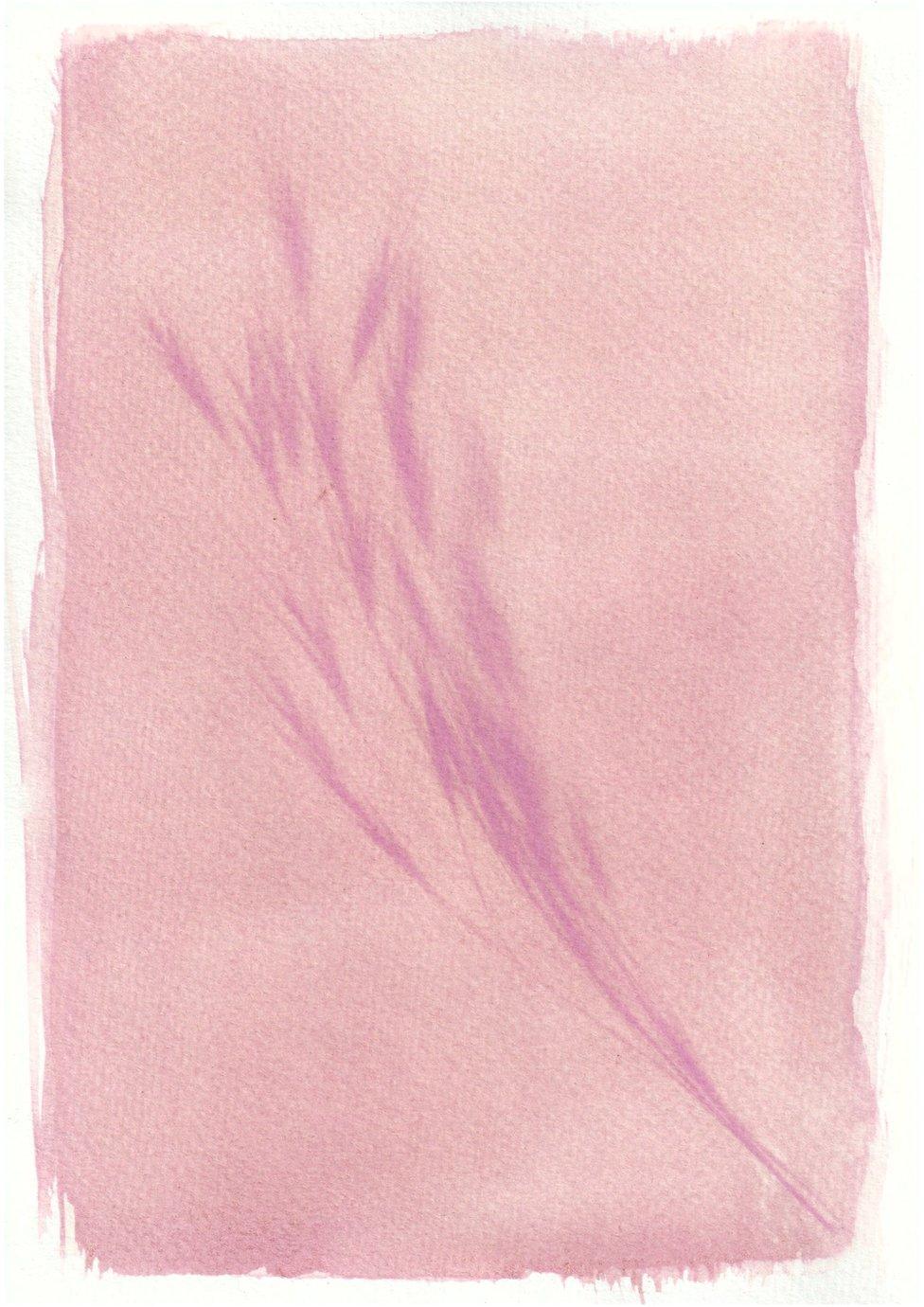
Barren Brome (anisantha sterilis) found at The Waterglades, Olympic Park, created using a beetroot stem emulsion with port
"Ultraviolet light breaks the double bonds in the pigment, causing it to fade everywhere on the print that is exposed to light.
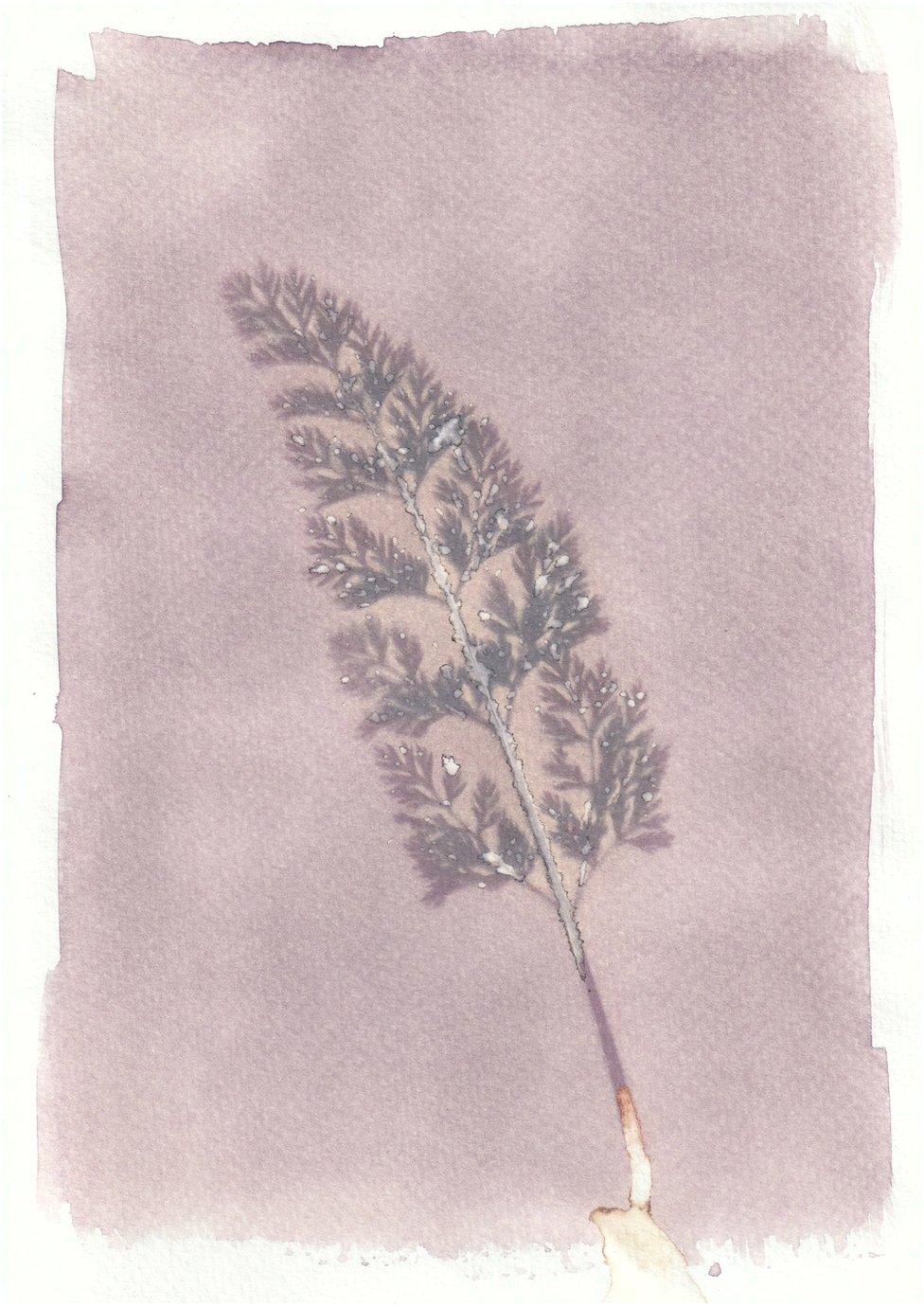
Cow Parsley (anthriscus sylvestris) found at Mile End Park, created using a Hippeastrum Dark Red emulsion
"Once it looks like the print has faded significantly (or to a hue that you feel works), remove the paper and plant material, and hopefully a vivid impression of your outline will be on the paper.
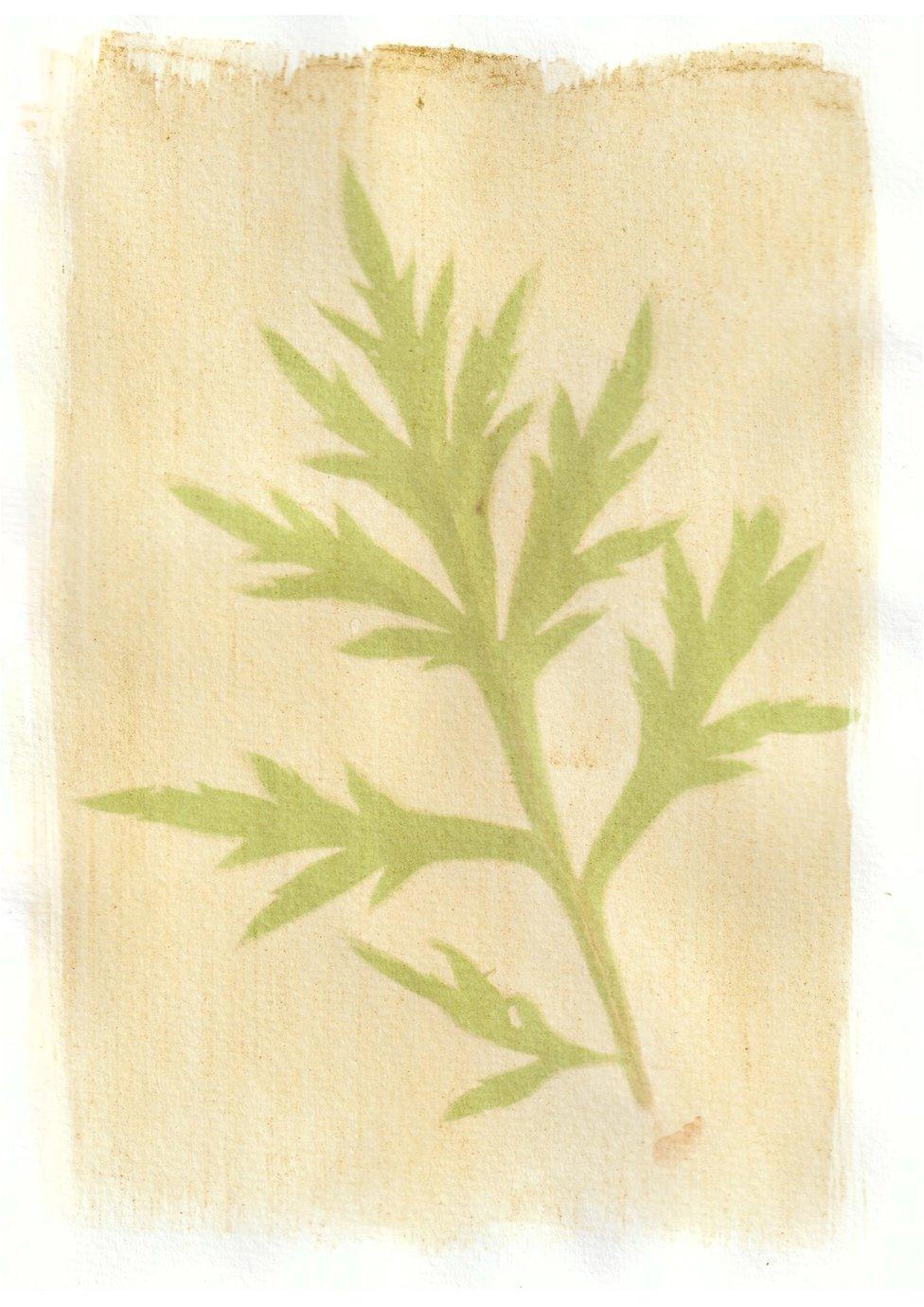
Common Mugwort (Artemisia vulgaris) found at Mile End Park, created using a baby spinach emulsion with turmeric
"Since natural dyes of plants are inherently unstable, these images fade slowly over time in light when they are displayed; the anthotype process is an impermanent one and images cannot be 'fixed' like a regular photographic process.
"Conceptually, I find this interesting; as the memory of that most surreal time [in lockdown] fades and warps, so will the images themselves, albeit very slowly.
"I do however scan all the prints straight away, so they will always be preserved in their prime.
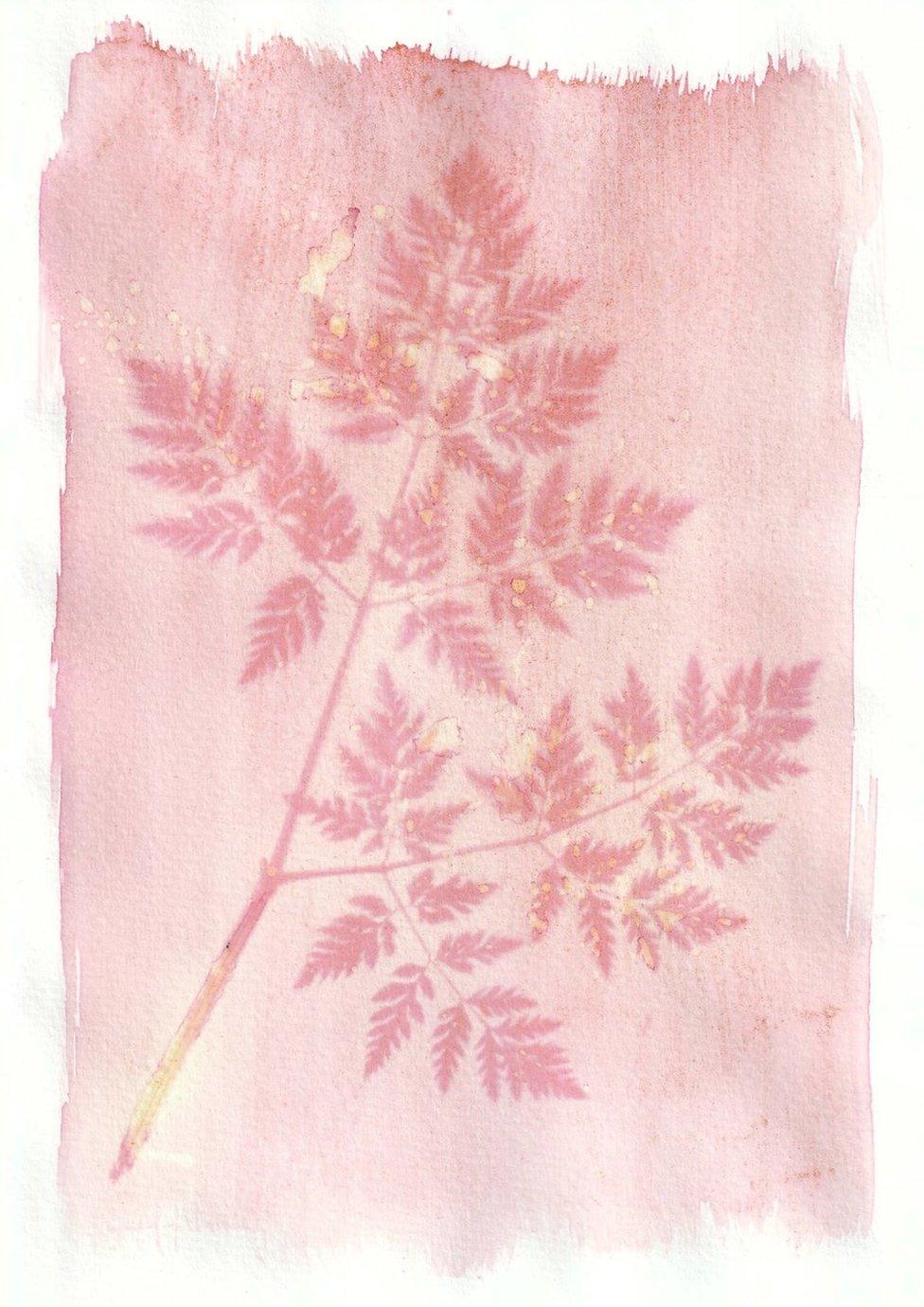
Cow Parsley (anthriscus sylvestris) found at Hackney Marsh, created using a beetroot stem emulsion with tumeric
"Despite the huge benefits and joy that creating prints brought me, I also felt that once I got to day 100 [in lockdown] and restrictions eased considerably, that it was a good time to take a break [from making anthotypes].
"I would absolutely consider creating more, especially if we are to go into lockdown again in my part of London.

Brackern fern (pteridium aquilinum) found at Abney Park, created using a beetroot stem emulsion with tumeric and honey
"There are still so many plant materials to experiment with and variables to explore, one could dedicate a lifetime to the process.
"However, it may be hard to create prints over winter due to low ultraviolet levels."
Boddy has advice for anyone wanting to make their own anthoptypes: "If you are picking plants grown in the wild, don't be destructive in what you take and do be respectful.
"It's also vital to know what plants are poisonous too, so please do your research, and wear gloves."
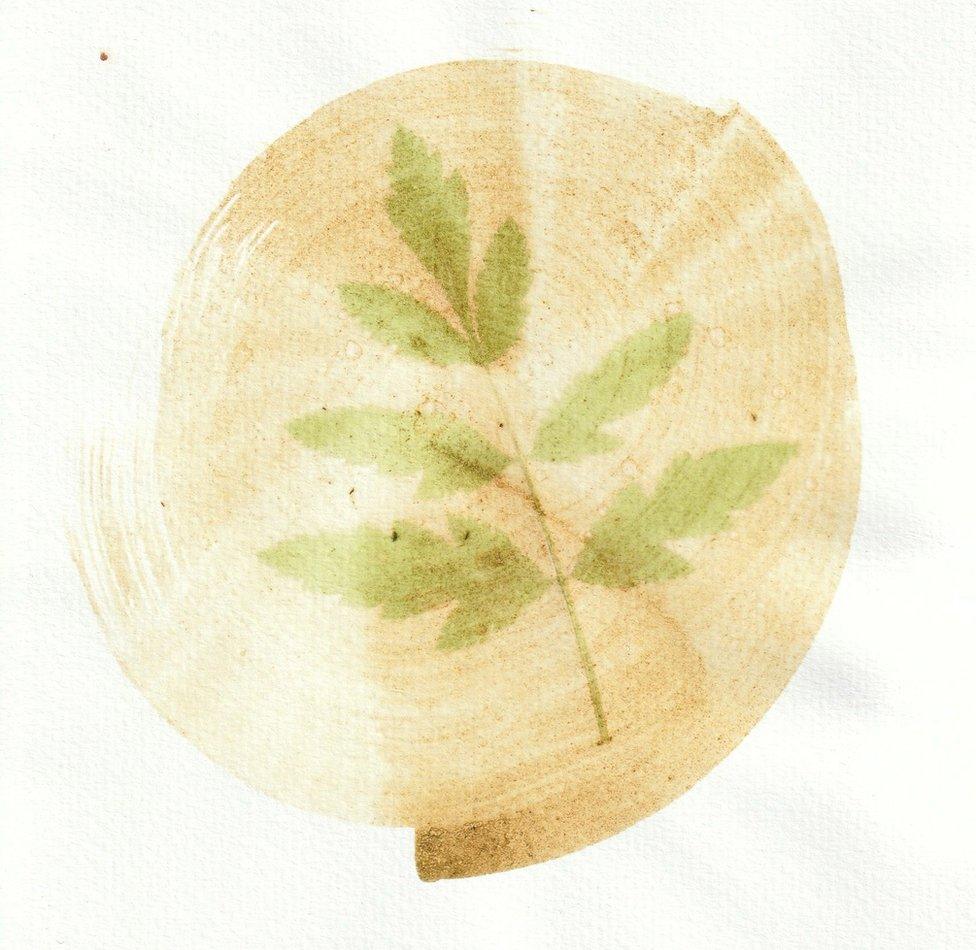
Unidentified weed found at River Lea, Tottenham, created using a spinach emulsion with tumeric
All photographs subject to copyright.